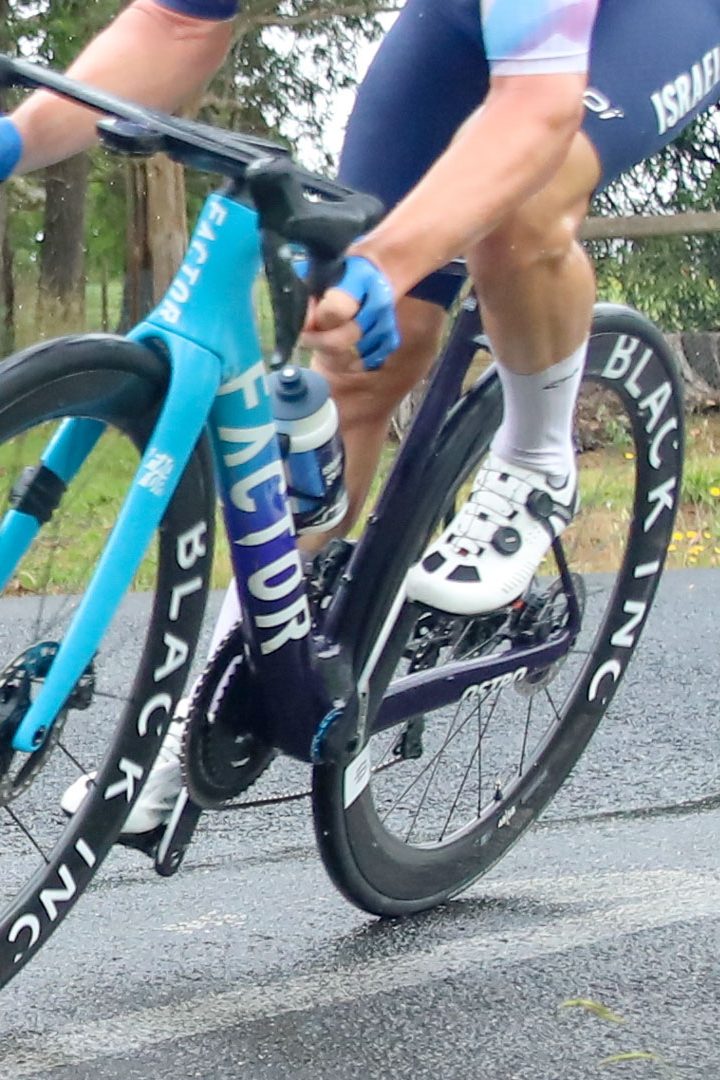Simon Clarke raced to seventh in the elite men’s Australian National Road Race Championships aboard what appears to be a new Factor Ostro.
The new bike is an evolution of the existing Factor Ostro, first introduced in 2020 and slated as a race bike for every terrain, from mountain stages to Paris-Roubaix. Clarke’s new bike, let’s call it the Ostro 2.0, seems to target similar versatility and will no doubt come with the usual claimed aero, stiffness, and weight improvements.
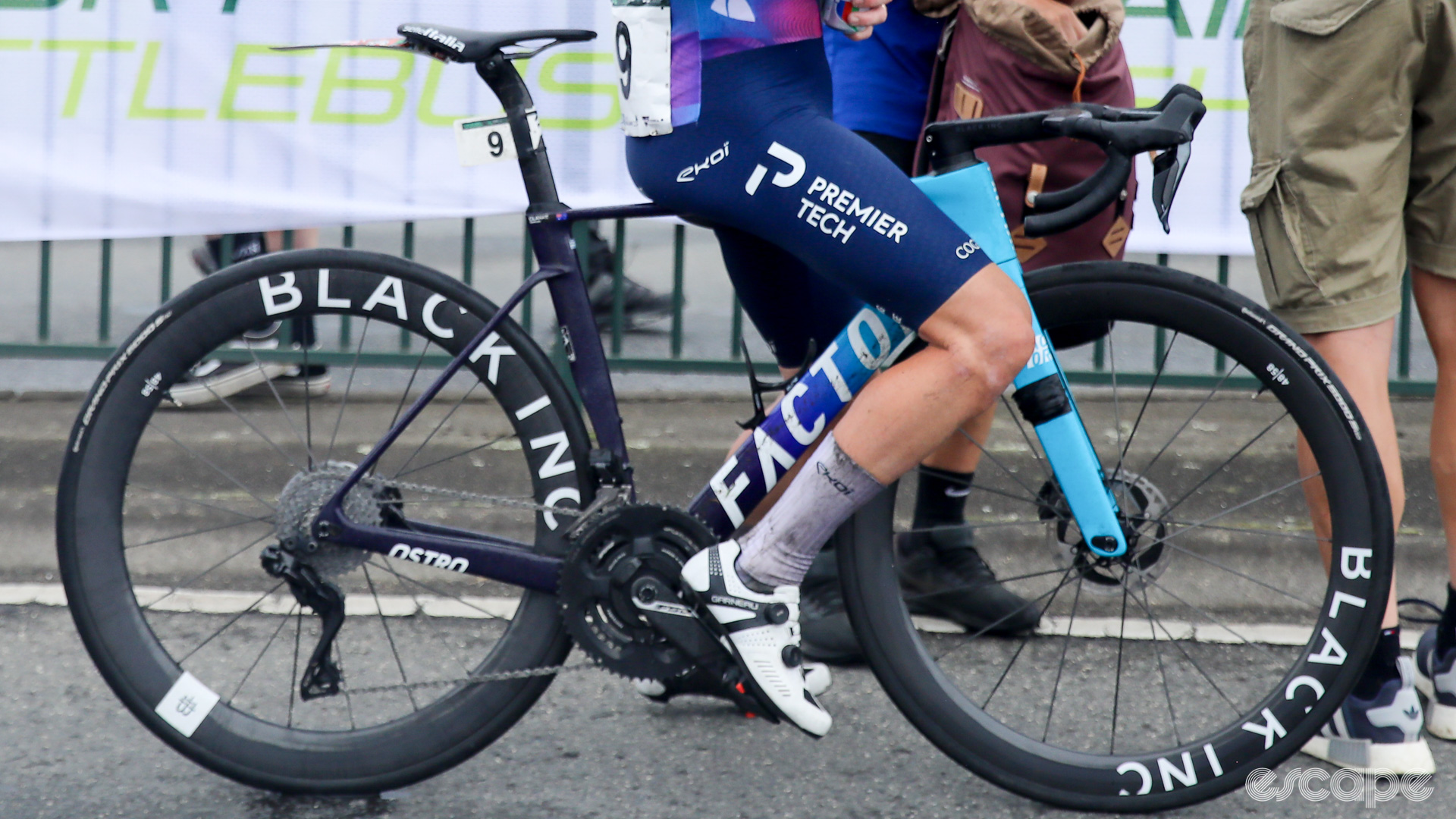
Is that speed I sniff?
While the new bike retains a distinctly Ostro vibe, there are a few notable updates. Most interestingly among those is a new rear set steerer position, or in other words, a deeper profiled head tube that extends not only behind the fork steerer and headset, but also much further in front like an aerodynamic nose cone of sorts. This forward-extended head tube is not a new concept by any means, but it was thrust back into the spotlight last year when Specialized unveiled the “Speed Sniffer” head tube on the new Tarmac SL8.

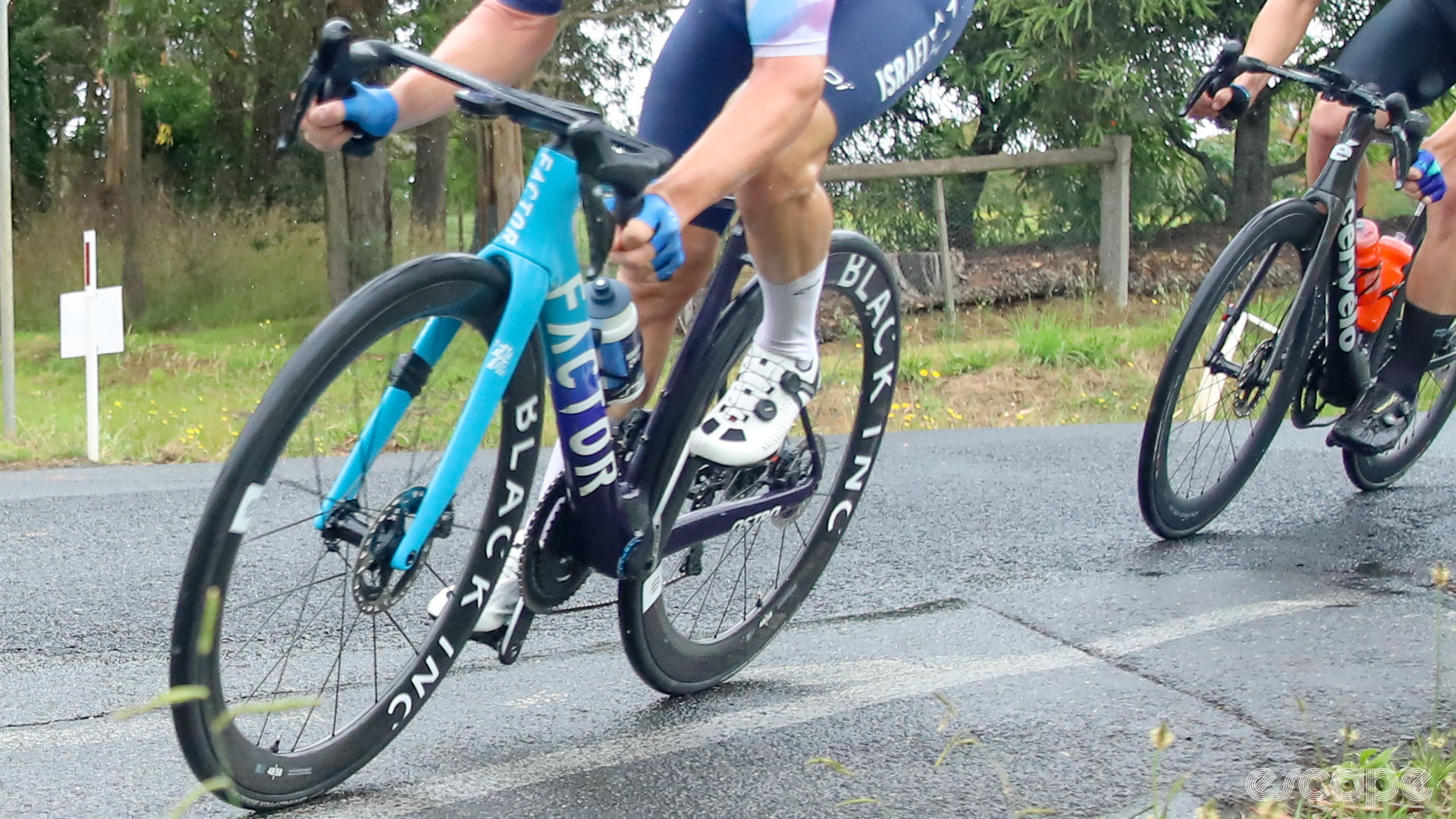
It seems Factor has used the rear set steerer concept to both extend the overall head tube profile and significantly reduce the width of the head tube’s leading edge. This narrower and deeper profile presumably offers some form of aerodynamic gain.
The new forks seem to have received a similar update and now feature a much deeper aero profile and may also sport a narrower leading edge, although this is less of a certainty than the head tube narrowing in the photos we have seen. One thing that is clear is that Factor has clearly paid a lot of attention to maximising the aero gains at the front end of the new frame and fork.
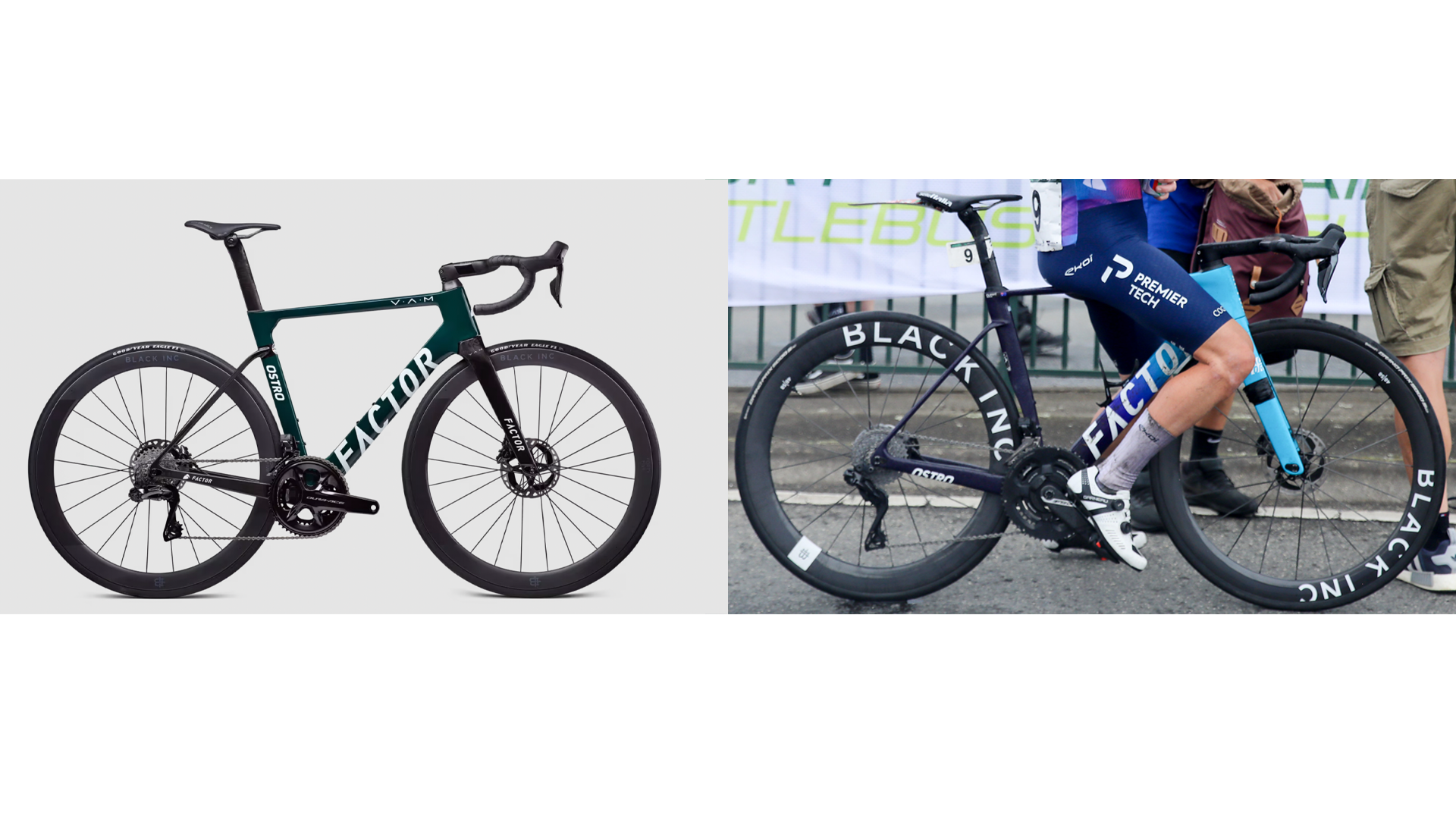
The down tube appears pretty similar to that on the existing Ostro VAM and, likewise, the bottom bracket. The Factor was among the first brands to adopt the potential aero gains from a taller bottom bracket shell on the first Ostro, so the continuity here is unsurprising.
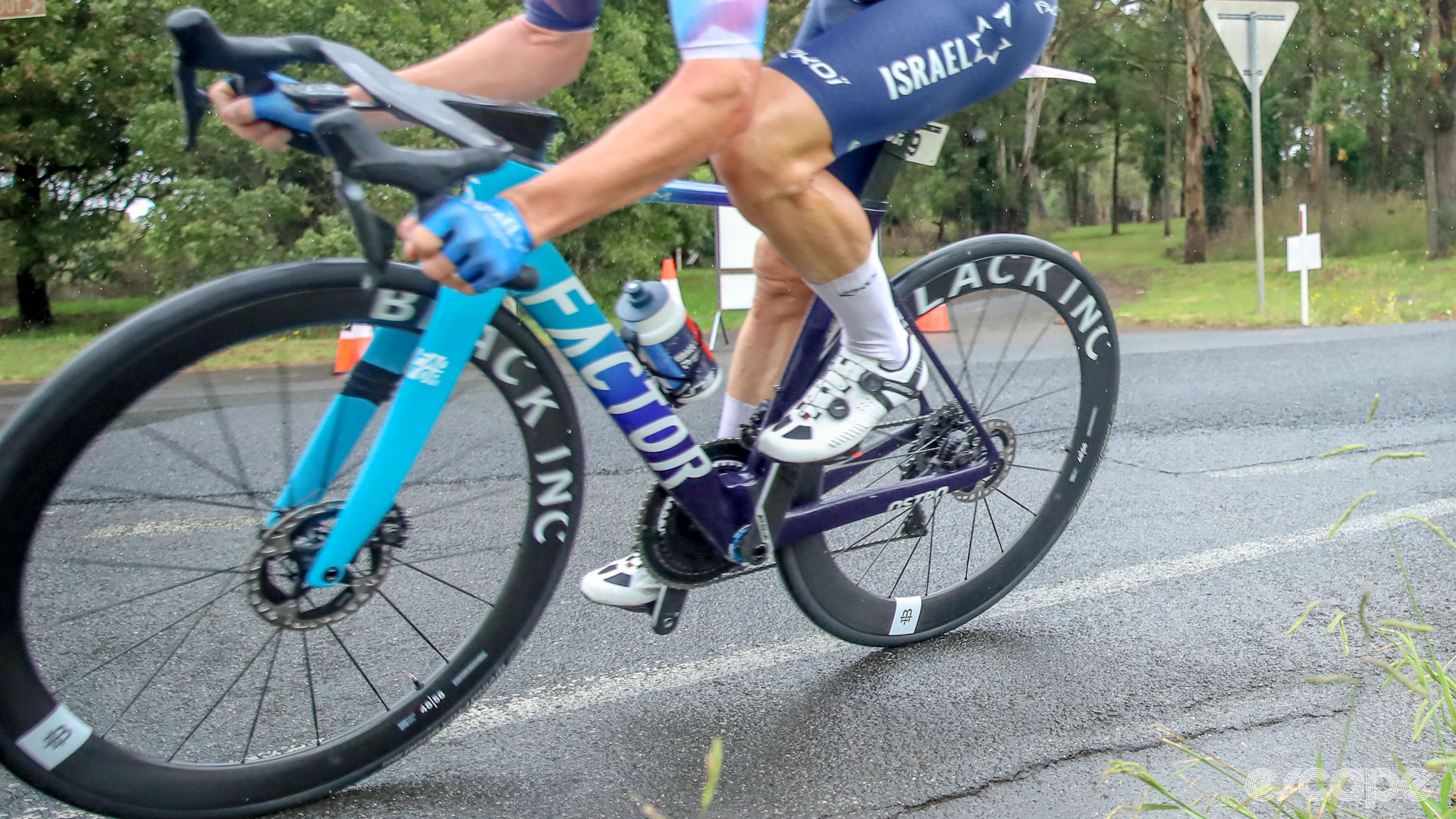
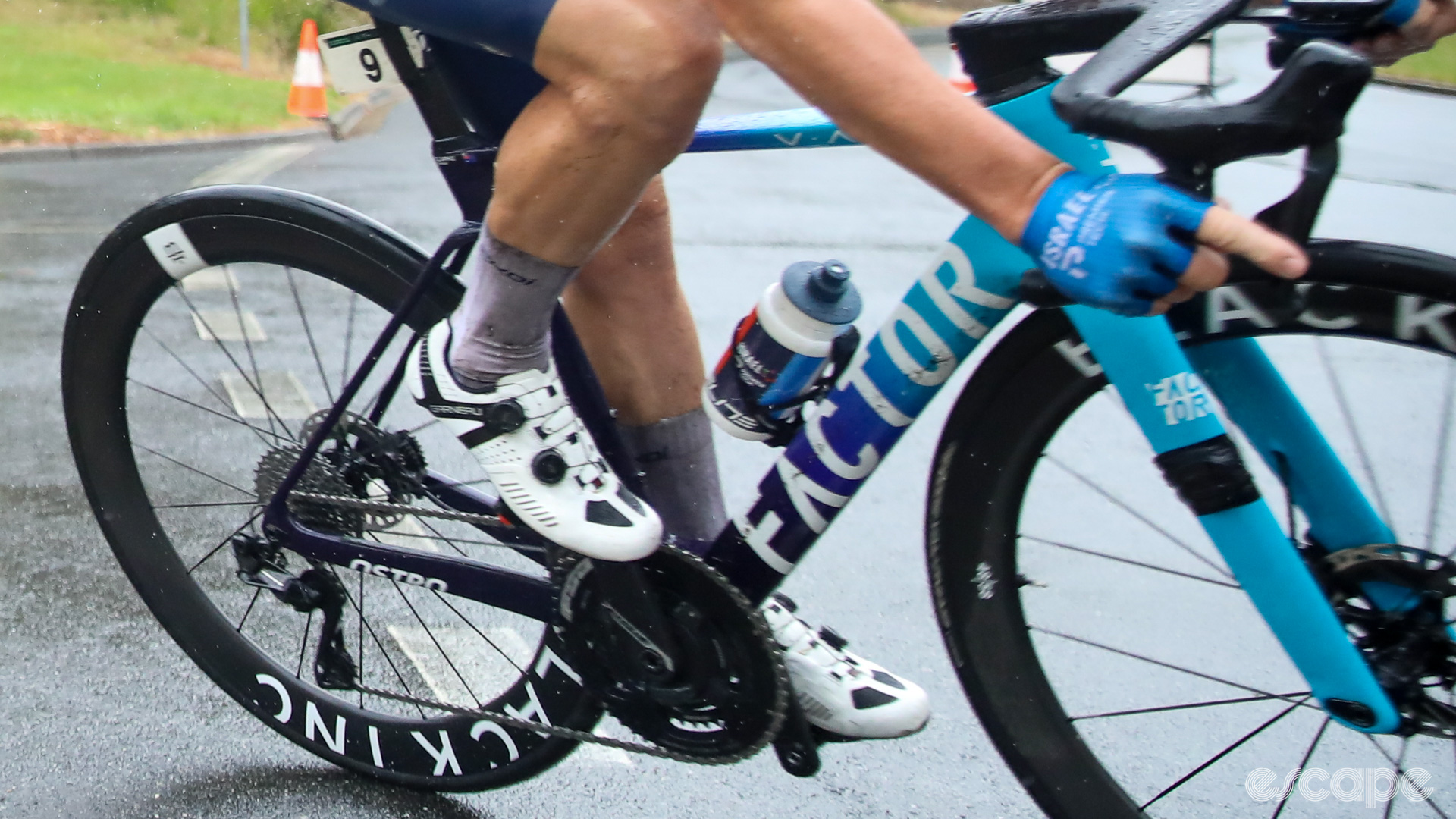
We already know this is a new Ostro thanks to the model name decal on Clarke’s new frame’s drive side chain stay. Those chain stays are now much taller than those on the existing Ostro, presumably in an attempt to increase stiffness and power transfer. These larger stays are matched with a larger bridge-like section at the drop-out, connecting the chain stays to the seat stays.
Expect Factor to tout compliance and ride feel among the improvements in the new frame also. Any extra stiffness from the new chain stays may well be designed to balance out any drop in stiffness from what appears to be new thinner seat stays. Thinner stays are typically associated with both improved compliance and potentially double up to provide a slight aero gain. Those stays now meet the seat tube with a more pronounced, sharper-angled profiled interface. It seems the more horizontal profile of the new interface could sit more in line with the flow and, as such, offer some marginal aero improvement.

Those thinner stays could also offer some small weight savings, although, expect that to be quite minimal given the existing Ostro already incorporated minimal seat stays. Factor may have found more substantial weight savings in the new top tube. Adopting a similar concept to that of the new O2 VAM, the new Ostro features a tapered top tube, tapering from its greatest depth at the head tube to a much thinner tube at the interface with the seat tube.
This tapering top tube should aid in seat tube compliance, but just given to being smaller than a tube of consistent geometry, it should also offer some weight savings. The tapering top tube concept is another design currently proving quite popular, and from what we understand, the tube’s position high up on the frame, between and behind the rider’s legs, and crucially in line with the flow means the decreased surface area doesn’t come with a significant aero penalty.
Speaking of seat tubes, Factor has also significantly updated the seat tube on the new Ostro. While the existing bike featured a consistent and profiled design through its length, the new seat tube features a thin and cutout-esque section hugging the rear wheel through its lower half, mated to a deeper section up to the stays interface which grows slightly deeper again above the stays. It’s certainly not as clean as the seat tube on the existing Ostro, so let’s hope it brings some significant aero, lightweighting, and compliance gains.
Clarke’s bike was completed with what appears to be a new Black Inc wheelset. While there isn’t much that’s obviously new about these wheels, one thing we can see is a “48|58” decal on each rim. Given Black Inc’s typical wheel nomenclature process of adopting the rim depths as the wheelset name, we can assume this new set features a 48 mm deep front rim and a 58 mm deep rear.
Presumably, Clarke will also race the new Ostro at the upcoming Tour Down Under, if so we will be there to bring you more details on the new Ostro as we have them.
Did we do a good job with this story?
